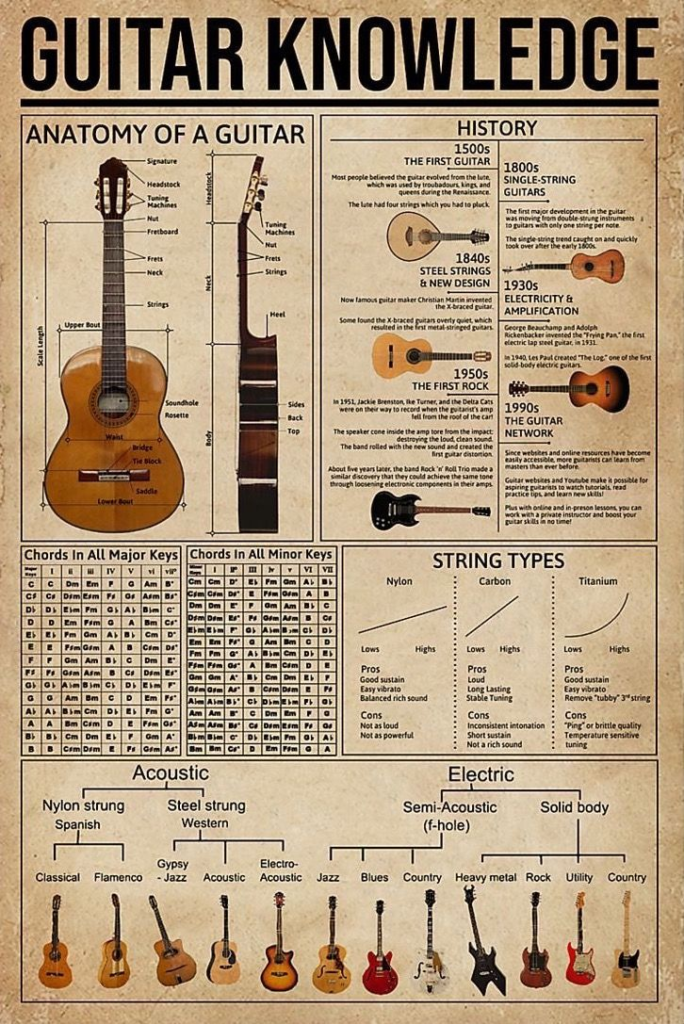Whether you’re just picking up the guitar for the first time or you’ve been playing for years, having a solid understanding of guitar anatomy is essential. Knowing the different parts of your instrument not only helps you communicate with other musicians but also allows you to troubleshoot issues and make informed decisions when it comes to upgrades or modifications. In this beginner’s guide, we’ll take a closer look at the various components that make up your guitar.
1. The Body: The body of the guitar is the large, hollow or semi-hollow portion that houses the sound-producing elements of the instrument. It typically consists of a top, back, and sides. The shape and size of the body can vary greatly depending on the type of guitar, with common shapes including dreadnought, concert, and classical.


2. The Neck: The neck is the long, slender portion of the guitar that extends from the body. It’s usually made of wood and is home to the fretboard, frets, and headstock. The neck plays a crucial role in determining the playability and feel of the guitar, with factors such as scale length and neck profile influencing the overall experience for the player.
3. The Fretboard: Also known as the fingerboard, the fretboard is a thin, flat piece of wood affixed to the neck of the guitar. It contains metal frets embedded into the surface at specific intervals, allowing the player to change the pitch of the strings by pressing them against the frets. The material of the fretboard can vary, with common options including rosewood, maple, and ebony.
4. The Headstock: Located at the end of the neck, the headstock is where the tuning pegs or machine heads are located. These pegs are used to adjust the tension of the strings, allowing the player to tune the guitar to the desired pitch. The headstock may also feature the guitar’s brand logo or other decorative elements.
5. The Bridge: The bridge is the component of the guitar that anchors the strings to the body. It serves as a point of contact between the strings and the body, transmitting the vibrations of the strings to the soundboard and producing sound. Bridges come in various designs, including fixed bridges, tremolo bridges, and acoustic bridges.


6. The Pickups: In electric guitars, pickups are magnetic devices that capture the vibrations of the strings and convert them into electrical signals. These signals are then sent to an amplifier, where they are amplified and projected as sound. Pickups can vary in design and construction, with common types including single-coil and humbucker pickups.
Understanding the basic anatomy of your guitar is the first step towards becoming a more knowledgeable and proficient player. By familiarizing yourself with these fundamental components, you’ll be better equipped to care for your instrument, troubleshoot issues, and make informed decisions when it comes to gear upgrades and modifications. So take some time to study your guitar’s anatomy, and watch as your understanding and appreciation for the instrument grow. Happy playing!

